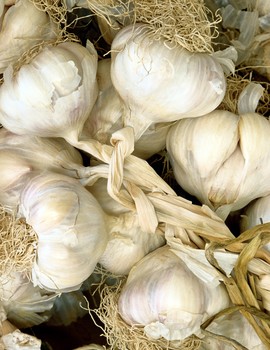How to Grow Garlic
Growing garlic at home can be a fun and rewarding activity, while making your home dining experience more rewarding, too. Many people prefer to grow their vegetables at home, because they prefer the better freshness and taste of their homegrown foods. Learning how to grow their own vegetables therefore becomes enticing, and learning how to grow garlic is right at the top of the list.
The different in quality between store-bought and homegrown garlic might be debatable. Some people no doubt imagine a major quality difference, because they want to believe that the hard work they put into the growth, nurturing and harvest of their own plant led to some success. These planters want to see their time was well-invested and worthwhile.
Regardless, people might grow garlic as a hobby or in order to sustain themselves in an agrarian manner, but knowing how to grow your own plants has many advantages. For one, you know exactly what process went into the growth of your own produce, so you can be certain you went organic or there were no pesticides on your food.
Besides, in today’s fast paced, commercialized society, it’s nice to have the satisfaction of producing something with your own hands and (moderately) hard work. Growing your own vegetables put you closer to the soil or closer to the earth, however you want to state it. There’s really no plant more earthy than garlic.
Garlic Information
Garlic is a cloven plant. For Americans, we think of garlic being used in foods of Italian origin. But garlic is used to spice up a variety of dishes from different nationalities.
The versatility of garlic causes many people to harvest their own garlic, because it’s needed in a great deal of their cooking. To spice up your menu, play around with garlic recipes. Grow your own garlic and you’ll have a ready supply for your culinary experiments.
Garlic Cloves
Garlic is hearty. Each garlic clove contains the material within itself to create more garlic plants. This makes garlic growing self-sustainable. If you have an existing clove of garlic, you plant it and grow an entire new vine of garlic bulbs.
You can then take several cloves off of the new garlic vine and plant them separately, creating a chain reaction of garlic plant growths. Depending on your ambition and resources, you start a small-time garlic growing operation by selling bulbs and cloves to your friends for a profit, teaching each one how to grow garlic.
Garlic Growing Supplies
This list of items you’ll need for growing garlic is short and simple. You’ll need soil, garlic cloves, and a watering can of some sort. You can grow garlic in a large pot or pan, or move it outside into a garden, if you’re growing several vegetables or a lot of garlic.
Once you have gathered your materials, you’re ready to begin the process of learning how to grow your future fruitful harvest, so let’s start.
Garlic Planting

How to Grow Garlic
Decide your basis for growing your garlic plants. Find a modestly-sized area to garden outdoors. Some people, however, grow garlic indoors. Either way is fine and the methods for doing so do not diverge very much. The only notable difference is that inside of a building, the temperature, sunlight and humidity are easily controlled.
However, this method require your regular attention and isn’t for those that do not have time to consistently care for their garlic. Your garlic plants will need a healthy amount of sun, which can be a problem, if you don’t move them to a window. Also, indoor garlic growing can cause pungent smells in your home, because garlic has a distinct smell.
Planting Garlic with Other Plants
Garlic makes a good neighbor, though. If planting with other crops, you needn’t worry about your garlic interfering with the diverse plants. Garlic is a friendly plant and most likely won’t kill your other vegetables.
Garlic can even protect neighboring plants from diseases, though it has diseases of its own to which it is susceptible.
Tips for Growing Garlic
The following tips for growing garlic should guide you the rest of the way.
Once you are prepared to plant your garlic cloves, you can do so by finding a plot of soil in your garden or container. What you’re looking for is a space where you can bury the cloves about 1 inch below the soil. You also want to put the garlic cloves about 4 inches apart from each other, in order to insure maximum growth space and easy organization/differentiation from each individual plant for harvesting.
If you are planting multiple rows of garlic, you should plant each row about 18 inches apart from each other. Planters suggest that the shortest day of the year (December 21 or Winter Solstice) is the best day to plant garlic, though no one knows for sure whether or not this is for practical agricultural or scientific reasons. This might be a convention handed down from generation to generation.
An interesting experiment would be to plant garlic both on the shortest day of the year and otherwise and compare the growth and quality of the different plants.
When a garlic plant is mature, the leaves begin to brown, die and shed. When you see this start to happen, harvest your garlic crop. If you harvest too late, the bulbs will be split or malformed.
If you harvest too early, the cloves themselves will be small and poor in quality. Hang the bulbs in a cool dry place to dry out the cloves for use.
This last step is important, as all of your hard work and planning nurturing the plants can go to waste, if you’re not cautious. After a week, your garlic bulbs should be ready to be de-cloved and eaten.
